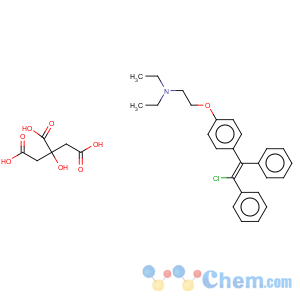You are here:
HomeProductsClomifene citrate Legal Clomid (frank@chembj.com)
Clomifene citrate Legal Clomid (frank@chembj.com)
-
- Product NameClomifene citrate Legal Clomid (frank@chembj.com)
- CAS No.50-41-9
- Purity99%
- Min Quantity1000Kilograms
- Price1~2

 View Contact Detail
View Contact Detail
-

Molecular Structure
Detailed Description
Anti-estrogen Steroids Clomifene citrate Effectively promoting pregnancy Legal Clomid CAS 50-41-9
Quick Detail :
Product name: Clomifene citrate
Alias: Clomid; Clomiphene citrate
Chemical Name:2-4-[2-Chloro-1,2-diphenylethenyl]phenoxy-N,N-diethylethanamine citrate
CAS : 50-41-9
EINECS:200-035-3
Molecular formula:C32H36ClNO8
Tamoxifen Citrate Anti-estrogen Nolvadex Raw Powder
Molecular weight :598.08
Appearance White crystalline powder
Assay: 99%
Usage:Clomifene is useful in those who are infertile due to anovulation or oligoovulation.has also been used with other assisted reproductive technology to increase success rates of these other modalities
Keywords:Clomifene citrate ,Clomid , Anti-estrogen
Product Description :
Clomifene citrate blocks the effect of the hormone oestrogen in your body. This blocking effect tricks your body into bumping up levels of two other hormones that are essential for ovulation.
Clomifene inhibits estrogen receptors in the hypothalamus, inhibiting negative feedback of estrogen on gonadotropin release, leading to up-regulation of the hypothalamic-pituitary-gonadal axis. Zuclomifene, a more active isomer, stays bound for longer periods of time. Clomifene is not a steroid drug.
In normal physiologic female hormonal cycling, at 7 days past ovulation, high levels of estrogen and progesterone produced from the corpus luteum inhibit GnRH, FSH and LH at the hypothalamus and anterior pituitary. If fertilization does not occur in the post-ovulation period the corpus luteum disintegrates due to a lack of beta-hCG. This would normally be produced by the embryo in the effort of maintaining progesterone and estrogen levels during pregnancy.
Ovulatory disorders are common causes of subfertility and infertility in women of reproductive age. Several pharmacologic agents are available to induce or augment ovulation, with varying rates of success. These medications include clomiphene citrate (a selective estrogen receptor modulator), aromatase inhibitors, urinary and recombinant gonadotropins, gonadotropin-releasing hormone (GnRH) analogs, and insulin-sensitizing agents. Clomiphene citrate is considered a first-line treatment because of its low cost, relative ease of use, and minimal side effects. It has been 50 years since the first clinical trial demonstrated that administration of clomiphene citrate induces ovulation in more than 75% of amenorrheic women.
Previously considered an antiestrogen, clomiphene citrate recently was reclassified as a selective estrogen receptor modulator. It is known to be both an estrogen agonist and antagonist; however, its agonist properties manifest only when endogenous estrogen levels are extremely low. In general, its antagonistic effects prevail. Clomiphene citrate administration leads to depletion of estrogen receptors at the level of the pituitary and hypothalamus, interrupting the negative feedback that estrogen normally produces. As a result, GnRH secretion is improved and stimulates pituitary production of follicle-stimulating hormone (FSH), which in turn drives follicular growth and maturation with emergence of 1 or more dominant follicles.
Applications :
Using clomifene citrate is a well-established, effective treatment. Clomifene citrate is the most widely used of all fertility drugs.
Clomiphene therapy is typically used for 5 consecutive days early in the menstrual cycle, for 3 to 6 monthly cycles. It may take several cycles to find the right dose to stimulate ovulation. After that dose is determined, a woman will take the drug for at least 3 more cycles. If she does not become pregnant after 6 cycles, it is unlikely that further clomiphene treatment will be successful.
Clomid can be initiated at a dose of 50 mg daily for 5 days, starting on cycle day 3, 4, or 5 (where cycle day 1 is the first day of the menstrual period), thus being taken on cycle days 3-7, 4-8 or 5-9
You usually take clomifene in pill form for five days early in your cycle, for up to six months at a time. A low dose of 50 mg is often used to start with.
About 70 per cent of women will ovulate in response to a fairly low dose of clomifene citrate. Of those who ovulate, about 40 per cent will become pregnant.

- Clomifene citrate Legal Clomid (frank@chembj.com)


 eileen
eileen



